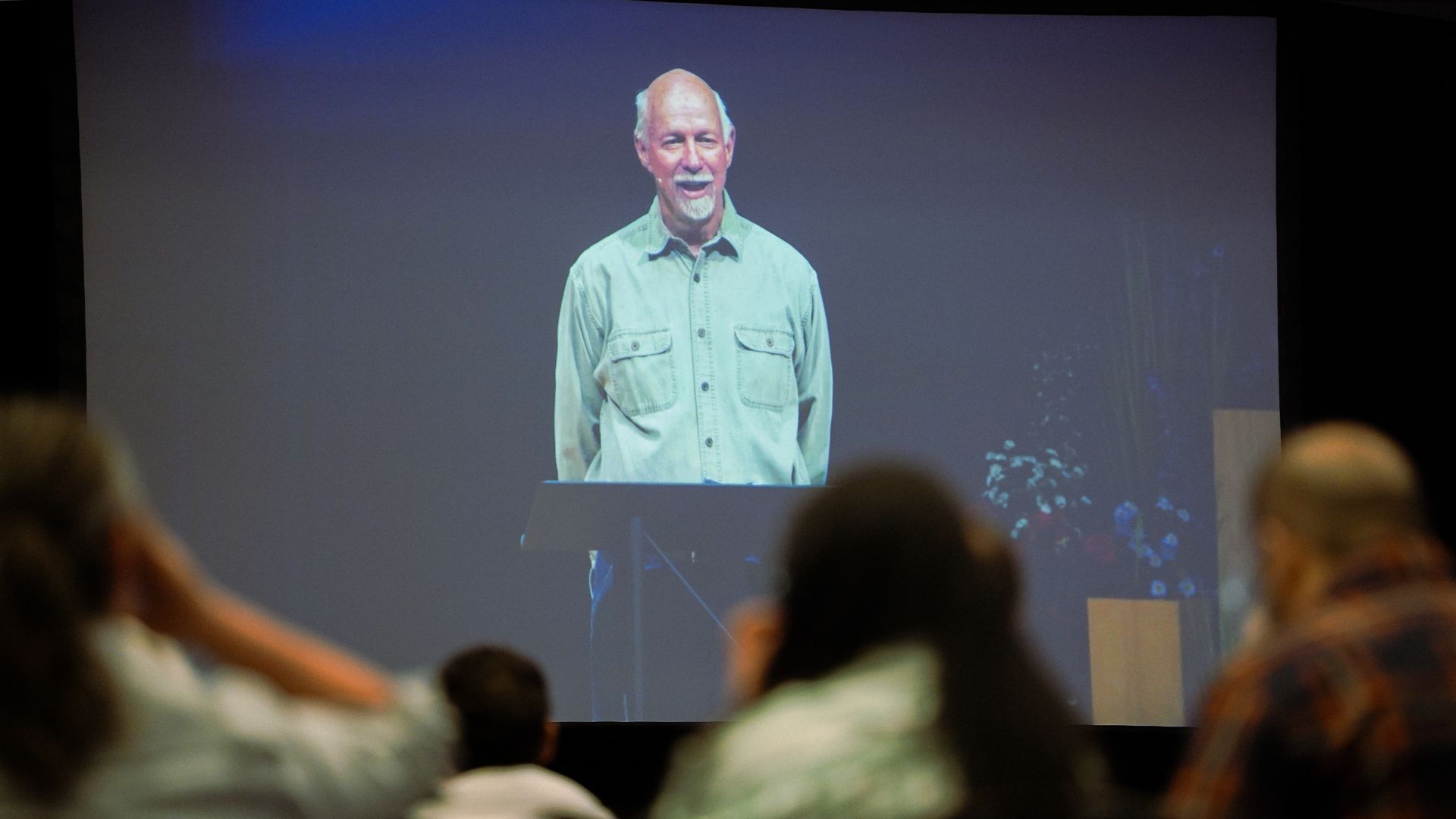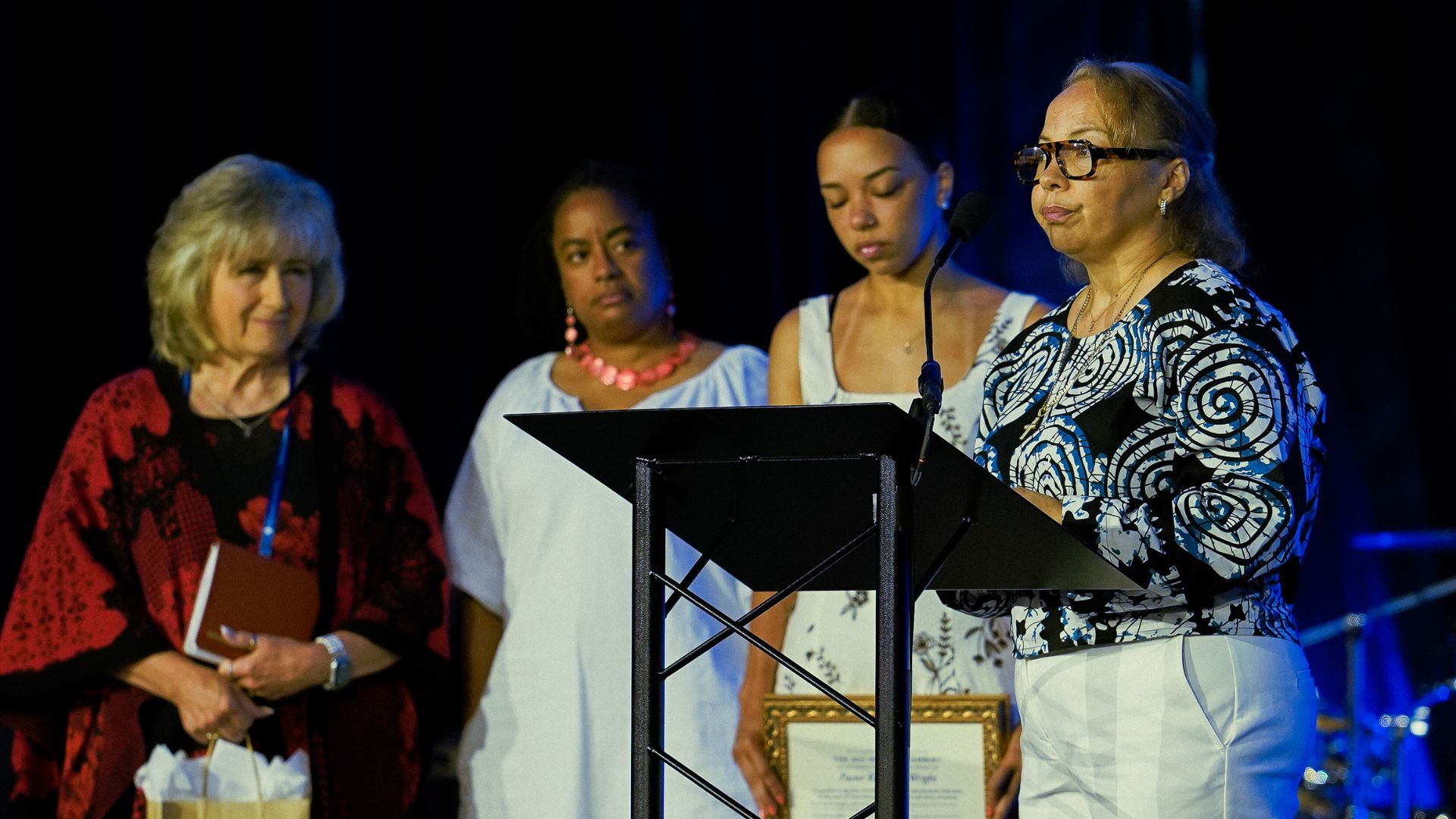How Capitalism Is Shaping Our Congregational Song and What We Can Do About It
“You know what we should do?” the violin player on my worship team asked one Sunday after rehearsal. “We should have a throwback Sunday where we sing all of the songs from our youth group days in the ’90s!”
Knowing he was more than half-serious, we started trading suggestions for this retro Sunday, some eliciting laughs, others groans of recognition.
“Lord, I Lift Your Name on High!”
“Shout to the Lord!”
“In the Secret!”
“Open the Eyes of My Heart!”
“Heart of Worship!”
“Majesty!”
“Jack Hayford or Delirious version?”
“Both!”
We continued for a few minutes, surprising ourselves with all the songs we could dig out of our mental archives. Reflecting on that conversation led me to wonder, why was it that we no longer sang any of these songs in worship anymore? Were they all so stylistically time-bound that none could transcend their generation? No doubt some of the songs were ephemeral (any bridge where I’m singing “Na na na-na-na-na-na,” for example), but I’ve become convinced that we have often unwittingly taken on the disposable mindset of our consumer-capitalist society that has limited the lifespan of congregational song.
The Economic Context of Congregational Song
Let’s back up. One positive trend I have noticed during my time leading, studying, and teaching worship is the growing commitment of many pastors and students to critically evaluate the songs sung in our worship services. Sometimes this means theologically exegeting lyrics to determine whether they reflect the commitments of the congregation and what might be missing (e.g., lament or social justice) from a “balanced diet” of congregational song. Other times thoughtful evaluators examine the canon of a congregation’s songs to see if their content and style reflect the cultural, ethnic, social, and generational diversity they wish to represent.
These measures have led many churches to sing more truthful and just praises to God. Yet by only focusing on issues of content and style, we miss larger forces that determine both how we use songs in worship and what songs are even available to the worship leader. We are constrained by powers we are not even aware of. I believe that one of the primary and largely invisible forces shaping congregational song in twenty-first-century Western (often) majority-white evangelicalism
is consumer capitalism.
I’ve become convinced that we have often unwittingly taken on the disposable mindset of our consumer capitalist society that has limited the lifespan of congregational song.
“Consumer capitalism” can be a slippery term. For the purposes of this article, I define this concept as an economic system that turns individuals primarily into consumers who are manipulated through advertising, marketing, and branding to constantly purchase and consume more and more things for the purpose of economic growth. We all know the bait-and-switch inherent to this process because we have all no doubt experienced it. Our phone is now four models old (“You still have an iPhone 11?! Can you text with that, or does it just send telegrams?”), the battery is on its last legs by early afternoon, and we hear about all the new features of the titanium iPhone 15 Pro Max—a sleek design (“the same alloy that spacecraft use for missions to Mars”), a powerful chip (“industry-leading speed and efficiency”), a professional-quality camera (“like having seven pro lenses in your pocket”)—and think, “Oh, if I could just get that new phone, my life would be so much better!” So you shell out the $1,199, and you can feel that frisson of delight as you open the perfectly designed packaging, pick up the immaculate object, and power it up for the first time.
You know the post-purchase sequence. The first week you marvel at the new features and capabilities; the second and third weeks you’re a little less enamored but still enjoying it; and by the fourth, it is simply your phone that you have grown completely accustomed to. Unless, God forbid, Apple ruins the short honeymoon period by announcing the release of the iPhone 16. Thus, through small innovations (that frankly many of us wouldn’t notice if we weren’t explicitly told) and a barrage of marketing, companies help create the dissatisfaction that their products—wonder of wonders! —promise to alleviate in a never-ending cycle of unassuageable desire and unlimited consumption.
Compelled to Consume
But that’s only one side of the consumer capitalist equation—the “pull” side that draws us to consumption (I promise we are coming to how this influences worship!). The “push” side is the forces that compel us to consume, whether we desire it or not. The clearest example of a push force in consumer capitalism is planned obsolescence, which is the strategy by which producers purposefully create products that will become obsolete, requiring the consumer to replace a product with a newer version.
Again, the iPhone serves as a pertinent case study. Even those who wish to resist the marketing siren song of the latest phone face a series of challenges in keeping their aging model. First, the battery life starts to go (and Apple did settle a lawsuit in 2018 claiming that they deliberately slowed batteries on older phones as part of routine software updates), then Apple changes the size of charging ports or eliminates headphone jacks, so you need to buy an assortment of adapters (Apple is more than happy to sell you those too!). Finally, Apple stops supporting your phone with necessary software updates. Now your phone has officially become obsolete. At each step of this process, the consumer is no doubt meant to think, “Wouldn’t it be easier just to get a new phone?”
The pull side of consumer capitalism has also influenced worship songs by training us to be dissatisfied with old songs and to crave the new, which just happens to benefit major corporations like Capitol and Sony that administer and distribute the lion’s share of popular Contemporary Worship Music (CWM). But I want to focus on the push side—the way planned obsolescence has degraded how we interact with music in worship. Obviously, the planned obsolescence of physical AV technology—microphones, monitors, projectors, sound boards, etc.—requires frequent upgrading of equipment. But there are also the less conscious ways this consumptive mindset shapes our choices in worship.
I cannot help but believe that our
consume-and-dispose approach to congregational song has started to affect songwriters’ approach to their craft.
For example, when I hear a new song that I think will fit my congregational context—theologically rich, musically compelling and intuitive, and thematically timely—I spend the next week learning it and then introduce it the following Sunday. People seem to respond well, and I even get a few positive comments after the service. So I use it again the next week, and something clicks. The singing is even stronger, and we share that indefinable but palpable experience of unity, intimacy, and connection to God and one another—and more people remark on it during coffee hour!
Well, I know a good thing when I see it, so we sing the song regularly—and we sing it over and over again through the next year. At first, people are engaged with each repetition. But then we seem to hit the peak of the bell curve. The singing slackens, the energy wains, and I notice a teenager in the balcony not so subtly rolling his eyes as I begin the opening chord progression. Finally, indifference turns to aversion—both on the congregation’s part and my own—and I’ve grown so sick of it that I can’t imagine ever using the song again. So, like the used-up AV equipment, I consign the song to the trash heap of Songs-from-CWM-Past where it languishes with “Forever,” “Oceans,” and “Good Good Father.”
Studying the trends of the top 25 songs on the Christian Copyright Licensing International’s (CCLI) Top 100 list provides corroboration of this example. CCLI is the main licensing body of CWM that allows for these songs’ legal use in church services. Churches pay a yearly fee and are required to report over a six-month period which songs they sing; the aggregation of this reporting data is then used to apportion royalties to the various copyright holders. The CCLI Top 100 lists the most reported songs over a particular season. Writing in The Canterbury Dictionary of Hymnology, music faculty Monique Ingalls, Andrew Mall, and Anna Nekola demonstrate that the “shelf life” of these songs continues to diminish: “In 1997, the average song on the list of top twenty-five worship songs was seventeen years old and the newest of the songs on the list was eight years old. By 2005, the average song on CCLI’s list was only ten years old, and six songs on the list were five or fewer years old.”
No one wants to Write Shoddy Songs
Here’s why I think all this matters: First, as a hymnwriter, I cannot help but believe that our consume-and-dispose approach to congregational song has started to affect songwriters’ approach to their craft, even subconsciously. If you know that your song will most likely have a short shelf life, why bother with the details of rhyme scheme or a coherent melodic structure or gender-inclusive language? Why bother with those finer points of craft when mediocre, good, and excellent songs will all be chewed up and spit out in the same way? It is much easier to put together a piece of IKEA furniture with mass-produced and interchangeable parts than to learn, like the Shakers, to build a chair with the care and skill required to ensure it will last for generations. In no way do I think this mindset is conscious (no songwriter begins her day by saying, “It’s time to write a shoddy song!”), but I do think these forces of consumer capitalism influence the songwriter. In other words, if songs are treated as commodities to be quickly consumed, the goods (songs) will start to reflect their use—a reversed planned obsolescence.
But more important, I do not believe we should be treating congregational song—this medium we have been given to praise God—like another product to be used up and discarded. This constant consumption suggests that “good” worship music requires both constant innovation and constant disposal to make room for the continually new. That cuts many congregations off from continuity with the rich musical tradition of our forebears (besides the occasional “Be Thou My Vision” or “Come, Thou Fount”—those hymns that can be played in a contemporary style). The saints before us have given us a depository of riches, a storehouse of spirituals, hymns, coritos, and 1970s and ’80s praise songs (or, as one friend jokingly refers to them, “traditional contemporary songs!”) that engender a longer view of faith and, hopefully, historical humility. Though we often believe that our contemporary age is “unprecedented,” we could receive comfort, challenge, and guidance from the saints who have gone before us if we were to listen for their voice.
Songs from the past give us a different vantage point from which to see God and present society, perhaps helping us notice our historical and social blind spots that we ignore at our own peril. In an essay titled “On Reading Old Books,” C.S. Lewis argues that reading only modern books tends to reinforce the particular errors of our time while cutting us off from the course correctives that voices from the past might offer. He writes, “Not, of course, that there is any magic about the past. People were no cleverer then than they are now; they made as many mistakes as we. But not the same mistakes. They will not flatter us in the errors we are already committing; and their own errors, being now open and palpable, will not endanger us. Two heads are better than one, not because either is infallible, but because they are unlikely to go wrong in the same direction.”
The same can be true for congregational song. When we exclusively sing new songs, it is a bit like seeing the world through a telescope rather than binoculars, with one eye rather than two. You can still see, but you lack depth perception—the ability to place yourself and the world around you in three dimensions. Singing songs from the past—like reading older books—is a way to add a third dimension, to see from a different angle and even realize that we can learn essential lessons about God, the human condition, and our world from the distinct vantage point of the great cloud of witnesses.
None of this, however, is an argument against singing new songs; quite the opposite! A congregation that refuses to sing any contemporary songs (and here I mean songs written recently, not necessarily in the
CWM style) suffers from the same monovision, simply with the other eye shut. Nor does it mean that certain songs won’t have a natural life cycle; many songs are rightly seasonal, speaking to the particular needs or situations of the moment and then fading when that need or situation has passed. No doubt songs written to respond directly to the Covid-19 pandemic will become (hopefully) obsolete as we emerge from the crisis. Change is an essential part of congregational song, and the constant curation of a changing canon is one of the responsibilities of any liturgical or denominational tradition. Yet this canon should carry a ballast of songs from our traditions that stabilize our movements and help us successfully navigate the new journeys to which we are called.
Which Songs Will Mark and Hold Us?
There are also deeply pastoral reasons for the temporal maintenance of song. Stories abound, for example, of the person suffering from dementia in the memory care unit who can no longer remember their spouse or children but who sings along perfectly with “Amazing Grace.” These people were given not only the gift of a meaningful song that spoke to the depth and breadth of their faith, but also the gift of a community that cherished, repeated, and stewarded the song so that it could still be, miraculously and mysteriously, a source of comfort and hope even “when memory fades and recognition falters” (to borrow the first line of the hymn “When Memory Fades,” by Mary Louise Bringle).
If our churches only sing the newest hits from the CWM charts, what will be the songs that accompany us on the last leg of life’s journey? We may not face the particular circumstances of dementia, but it still begs the question: what songs will serve as the through lines in our life—songs that will mark and hold us, shape our faith, and take on new meaning as we sing our way through births and deaths, marriages and divorces, the mountaintop experiences and the long walks through the lonesome valleys?
If new songs are to become part of the warp and woof of our life’s tapestry of faith, we need to become good stewards of good songs. We cannot hope for a song to keep speaking throughout a single lifetime let alone several generations if it is does not have the necessary theological, musical, and lyrical depth to sustain repeated use. If a song is not good, it is not worth stewarding. I recognize the concept of “good songs”
has been used in elitist, and even racist, ways to suggest that classic hymns from the European tradition are the ideal of congregational song and everything else is inferior. If “good” becomes the descriptor of only one style, type, or tradition of song, then it is indeed an elitist and (often) racist claim that should be rejected.
Yet some people in rightly rejecting this viewpoint tend to give up on any type of evaluative process at all. As long as the song is sincere, not harmful, and people seem to enjoy singing it, then it is good to use in worship. This presents a false dichotomy. Instead, to borrow an idea from writer and theologian Frank Burch Brown, I believe we can avoid either extreme by developing standards of excellence within each style and tradition of Christian music by the practitioners, theologians, and experts within that tradition. The question then becomes, what are the characteristics that make for a stronger gospel song, hymn, CWM song, corito, etc., and what makes for a weaker song? By using such
criteria, we can begin to evaluate which songs are good enough to steward well.
How can we ensure that we don’t fall into consumptive habits that are constantly reinforced by the economic, social, and political forces around us? First, as already mentioned, we should sing songs across generations that not only remind us of the faith that has been handed down to us, but also to help us check our more egregious consumptive tendencies simply by appreciating what has proved lasting. Second, just as we repeat a song enough to help congregants learn it and bring it into the canon, we should have a similar process to preserve it. This would entail resisting the urge to sing it ad nauseum. Instead, like a well-aged scotch, we should portion it out over time, mindfully savoring
it throughout the years rather than thoughtlessly consuming it in one gulp.
Resisting the urge of instant gratification would no doubt be difficult, but it would also be countercultural. Perhaps then the songs from our generation too can enter the depository of the saints and continue to
reverberate through the ages as our particular strain in the eternal praise of God.













